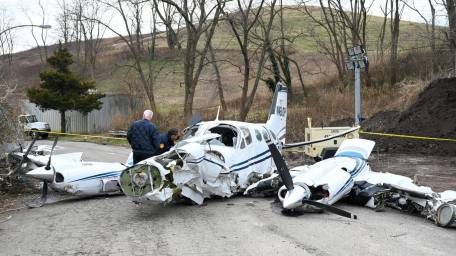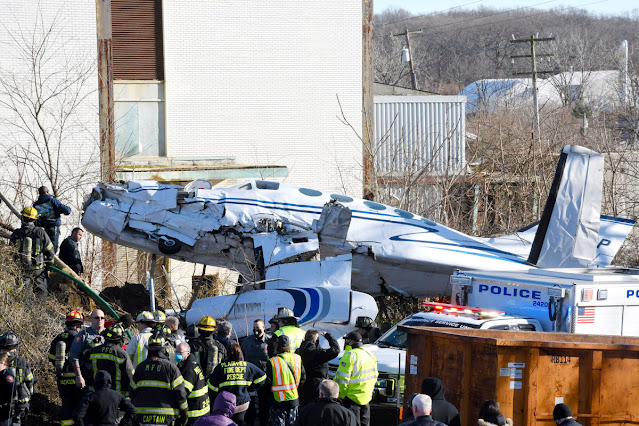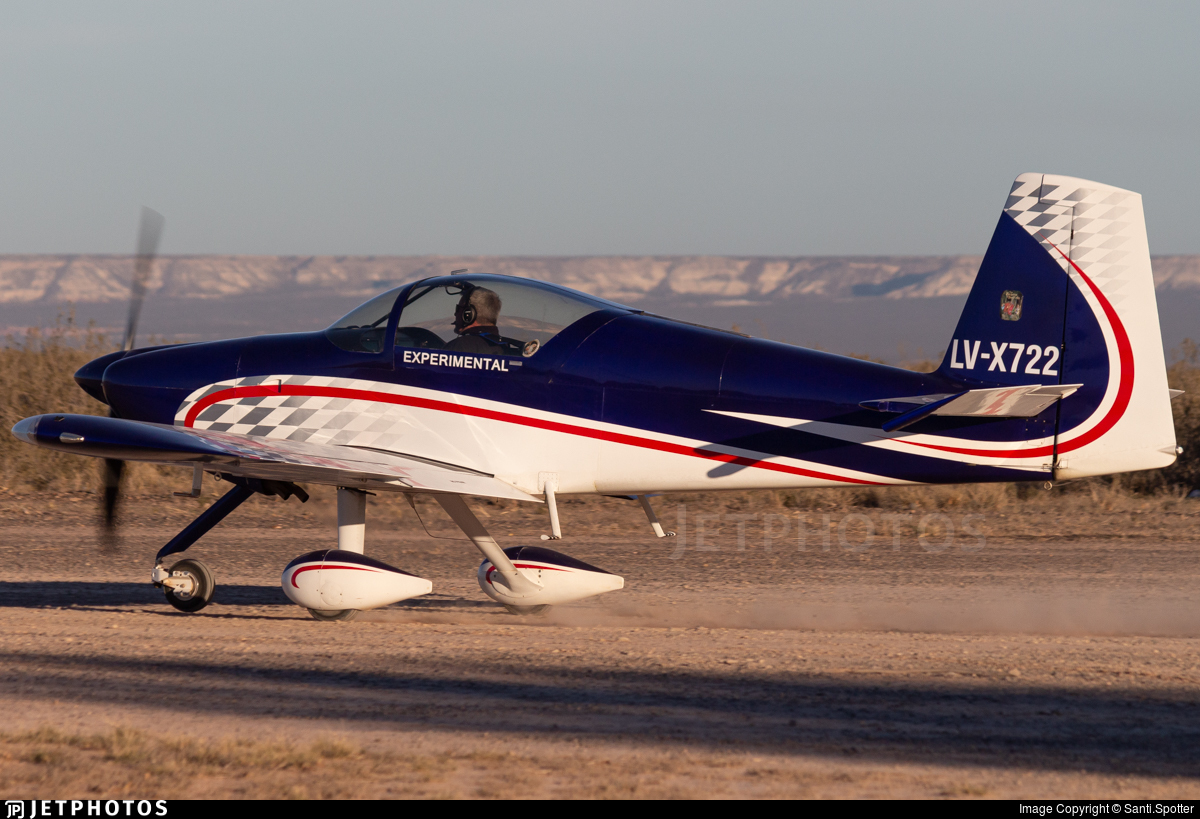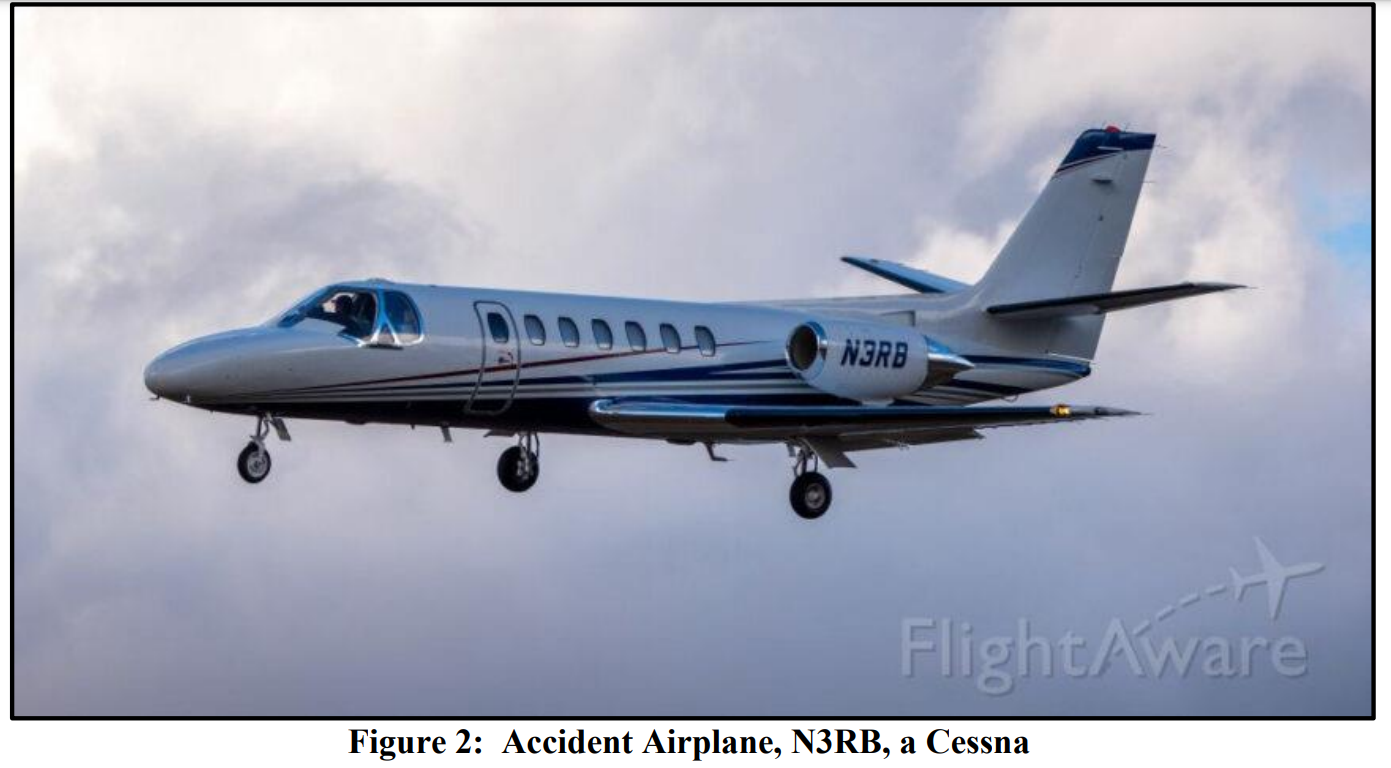
Analysis
The pilot reported that, during the initial climbout, about 1,000 ft above ground level, one of
the engines stopped producing power. He confirmed that all engine controls were full forward
and the main fuel tanks were selected. Immediately thereafter, the remaining engine began to
surge, then stopped producing power. He established best glide speed and looked for an area to
perform a forced landing. The airplane crashed into a solid waste disposal facility, about 2.3
nautical miles northwest of the departure airport.
First responders arrived immediately after the accident and found only a trace amount of fuel
within the confines of the accident site or in the fuel tanks. The only postaccident fire was
centered on a small, localized area near the right engine turbocharger. Both main fuel tanks
were empty, and the auxiliary bladder tanks were ruptured by impact forces. Examination of
both engines revealed no evidence of a preaccident malfunction or anomaly. A surveillance
video showed no evidence of smoke or mist training the airplane seconds prior to impact. The
pilot reported that he departed the airport with 112 gallons of fuel on board. The pilot did not
provide evidence of the latest refueling when requested by investigators. The available
evidence is consistent with a total loss of engine power to both engines due to fuel exhaustion.
Probable Cause and Findings
The National Transportation Safety Board determines the probable cause(s) of this accident to be:
The pilot’s inadequate preflight fuel planning, which resulted in a total loss of engine power
due to fuel exhaustion and a forced landing.
Page 2 of 7 ERA21LA098
Findings
Aircraft Fuel – Fluid level
Personnel issues Fuel planning – Pilot


Factual Information
On January 10, 2021, about 1301 eastern standard time, a Cessna 421B, N421DP, was
substantially damaged when it was involved in an accident near Old Bethpage, New York. The
pilot was seriously injured. The airplane was operated as a Title 14 Code of Federal
Regulations Part 91 personal flight.
The pilot reported that he departed runway 32 at Republic Airport (FRG), Farmingdale, New
York about 1300. During the initial climbout, about 1,000 ft above ground level, one of the
engines stopped producing power. He confirmed that all engine controls were full forward and
the main fuel tanks were selected. Immediately thereafter, the remaining engine began to
surge, then stopped producing power. He established best glide speed and looked for an area to
perform a forced landing. The airplane impacted a solid waste disposal facility, about 2.3
nautical miles northwest of FRG.
Surveillance video captured the airplane during the final seconds before the crash. The airplane
approached the ground at a nearly flat pitch angle and struck the ground left wing first. There
were no visible smoke, vapors, or mist trailing the airplane. The wing flaps and landing gear
were in the retracted positions.
One of the first responders, a firefighter, reported that, upon arrival at the accident site after
the accident, he did not see or smell any fuel on the ground. During his travels back and forth
to the wreckage, he saw no pooling or buildup of fuel anywhere.
Another first responder reported that, when approaching the wreckage, fuel was dripping from
the fuselage, but “…it was a minimal leak.” He estimated the drip rate to be 5 drops per minute,
and after about 5-10 minutes, the leak stopped. He inspected the wreckage and could visibly
see that there was no fuel in the left wing. The right wing was too damaged to go under and he
was unable to get a better look.
A Federal Aviation Administration (FAA) inspector who traveled to the scene reported that the
airframe sustained “major damage” to the nose and both wings and the fuselage came to rest at
a 70° angle. He did not observe any signs of fuel under the wreckage, nor did he smell any fuel
near the wreckage. There were no signs of fuel spillage on the street adjacent to the wreckage.
There were no blue streaks or signs of fuel leaks on the wings, engines, and fuselage. All fuel
tanks were checked and found to be empty of fuel. There was a localized area of postaccident
fire damage inside the right engine compartment, immediately forward of the turbocharger.
The wreckage was recovered to a secure storage facility where a more complete examination
was performed.
All major structural components of the airplane were accounted for. Flight control continuity
was established from the cockpit controls to the elevator and rudder. Aileron continuity was
established from the cockpit controls to the center cabin bellcrank.
All five fuel filler caps were observed installed at their respective positions. The right, main fuel
tip tank was observed to be intact and no signs of hydraulic deformation were evident. The
forward section of the left main tip tank was separated from its attachment fittings. Both tip
tank center baffles were intact. Both wing auxiliary (bladder) tanks were compromised from
impact forces. The left-wing nacelle locker tank was intact and empty.
Examination of the left engine revealed no external damage, cracks, or oil leakage from the
engine case. The engine was turned through manually, and compression and suction were
observed on all cylinders. Valve movement was correct. The top spark plugs showed normal
color and wear when compared to a Champion inspection chart. Both magnetos were removed
and tested; they produced spark to all leads when rotated. The oil filter was removed and
opened for examination; no ferrous particulates were observed. The engine-driven fuel pump
was removed and rotated; it pumped fuel when tested. Disassembly of the fuel manifold valve
revealed no internal damage or contamination. The fuel strainer was removed; there was
normal to moderate sediment in the bottom of the bowl. The fuel screen was clean and
unobstructed.
Examination of the right engine produced the same results, except for the engine oil filter. The
outside of the filter was discolored from the postaccident fire damage. The filter was opened,
and the element was free of particulates.
The airplane was equipped with a Shadin fuel management system. The cockpit display unit
was removed from the wreckage and sent to the National Transportation Safety Board
(NTSB)Vehicle Recorders Laboratory for examination and download of the data. The unit
recorded the accident flight. The “FUEL REM” (fuel remaining) indication at the time of the
accident was 36.1 gallons. The “FUEL USED” indication was 0.0 gallons. The accuracy of the
fuel remaining value was dependent on proper input from the operator.
The pilot reported that he departed FRG with 112 gallons of fuel on board. He was requested,
through his attorney, to provide documentation of the airplane’s last refueling, including time,
date, location, and amount. He did not provide the requested documentation to the NTSB or
the FAA.
History of Flight
Initial climb Fuel exhaustion (Defining event)
Emergency descent Off-field or emergency landing
Pilot Information
Certificate: Private Age: 57,Male
Airplane Rating(s): Single-engine land; Multi-engine land
Seat Occupied: Left
Other Aircraft Rating(s): Helicopter Restraint Used:
Instrument Rating(s): Airplane Second Pilot Present:
Instructor Rating(s): None Toxicology Performed:
Medical Certification: Class 3 Without
waivers/limitations
Last FAA Medical Exam: September 10, 2020
Occupational Pilot: No Last Flight Review or Equivalent: October 17, 2020
Flight Time: 1893 hours (Total, all aircraft), 12 hours (Last 90 days, all aircraft)
Aircraft and Owner/Operator Information
Aircraft Make: Cessna Registration: N421DP
Model/Series: 421B Aircraft Category: Airplane
Year of Manufacture: 1972 Amateur Built:
Airworthiness Certificate: Normal Serial Number: 421B0353
Landing Gear Type: Retractable – Tricycle Seats: 8
Date/Type of Last Inspection: March 27, 2020 Annual Certified Max Gross Wt.: 7450 lbs
Time Since Last Inspection: 30 Hrs Engines: 2 Reciprocating
Airframe Total Time: 5331 Hrs as of last inspection Engine Manufacturer: CONT MOTOR
ELT: Installed Engine Model/Series: GTSI0-520-H1B
Registered Owner: Rated Power: 375 Horsepower
Operator: On file Operating Certificate(s)
Held: None
Meteorological Information and Flight Plan
Conditions at Accident Site: Visual (VMC) Condition of Light: Day
Observation Facility, Elevation: KFRG,81 ft msl Distance from Accident Site: 2 Nautical Miles
Observation Time: 13:53 Local Direction from Accident Site: 139°
Lowest Cloud Condition: Clear Visibility 10 miles
Lowest Ceiling: None Visibility (RVR):
Wind Speed/Gusts: 8 knots / Turbulence Type
Forecast/Actual:
None / None
Wind Direction: 330° Turbulence Severity
Forecast/Actual:
N/A / N/A
Altimeter Setting: 30.18 inches Hg Temperature/Dew Point: 5°C / -7°C
Precipitation and Obscuration: No Obscuration; No Precipitation
Departure Point: Farmingdale, NY (FRG) Type of Flight Plan Filed: None
Destination: Bridgeport, CT (BDR) Type of Clearance: VFR
Departure Time: 13:00 Local Type of Airspace: Class D
Airport Information
Airport: Republic Airport FRG Runway Surface Type: Asphalt
Airport Elevation: 80 ft msl Runway Surface
Condition: Dry
Runway Used: 14 IFR Approach: None
Runway
Length/Width:
6833 ft / 150 ft VFR Approach/Landing: Forced landing
Wreckage and Impact Information
Crew Injuries: 1 Serious Aircraft Damage: Substantial
Passenger
Injuries:
Aircraft Fire: None
Ground Injuries: Aircraft
Explosion:
None
Total Injuries: 1 Serious Latitude,
Longitude:
40.7598,-73.4465(est)
Page 7 of 7 ERA21LA098
Administrative Information
Investigator In Charge (IIC): Hicks, Ralph
Additional Participating
Persons:
Marvin Daniels; FAA/FSDO; Farmingdale, NY
Andrew Hall; Textron Aviation; Wichita, KS
Original Publish Date: August 12, 2022 Investigation Class: 3
Note: The NTSB did not travel to the scene of this accident.
Investigation Docket: https://data.ntsb.gov/Docket?ProjectID=102509
The National Transportation Safety Board (NTSB), establish
Check out our Ad Free Aviation Forum – www.Scudrunners.com



